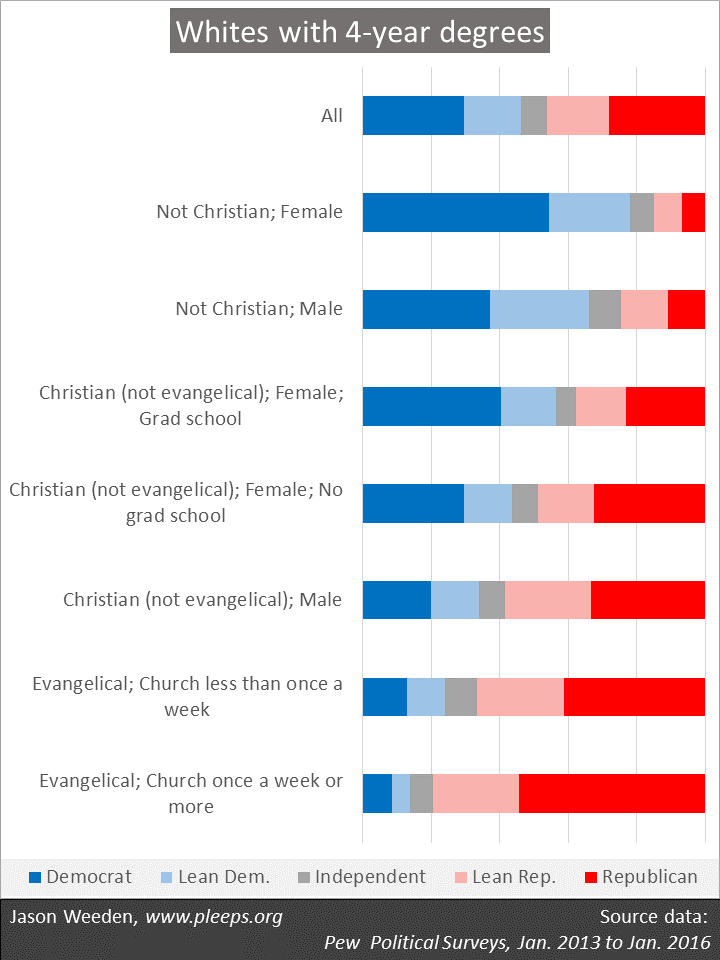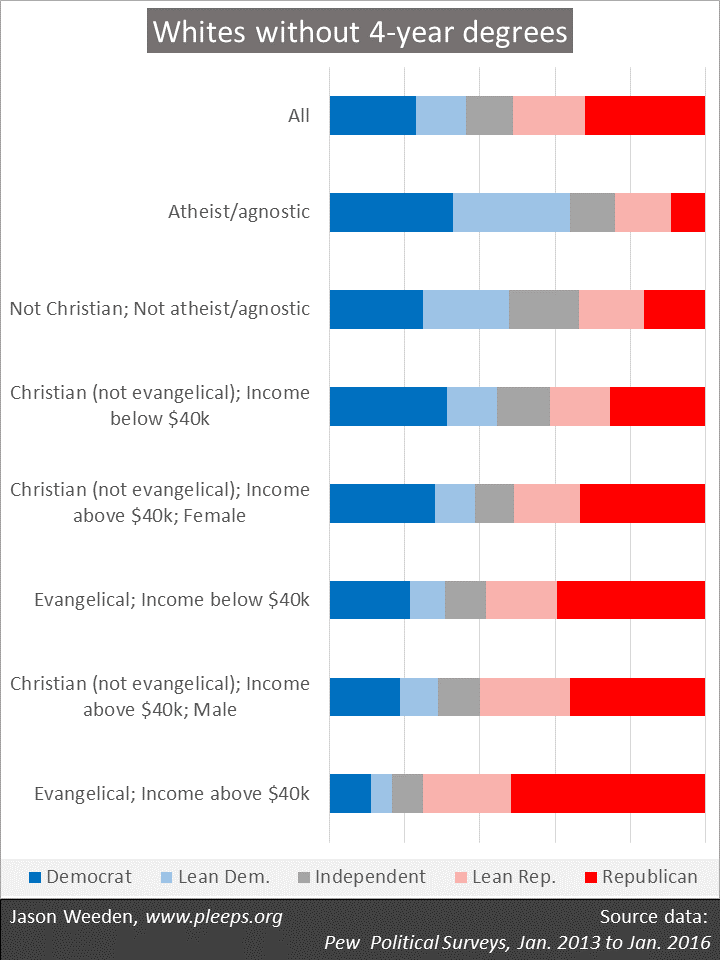Over the next few months, we’re going to be hearing a ton about whites with and without college degrees. While whites generally favored Romney over Obama in 2012, recent polls suggest that college-educated whites are leaning towards Clinton, while the majority of less-educated whites remain in the Republican column.
The reasons for the increasing educational divide among whites relate in part to the fact that Trump’s white nationalist positions are most popular with less-educated whites. But they also relate to ongoing demographic shifts. Take a look at the charts below, which show party affiliation using Pew data from 2013 to the beginning of 2016, broken out between whites with 4-years degrees and whites without 4-year degrees.
As shown in the first chart, before Trump became the Republican standard-bearer Democrats were already in a strong position with college-educated whites who are non-Christian women (folks like Green party nominee Jill Stein), non-Christian men (folks like Democratic runner-up Bernie Sanders), and non-evangelical Christian women with postgraduate educations (folks like Hillary Clinton). A key point to keep in mind is that, over time, the proportion of college-educated whites who are women and/or non-Christians has been on the rise. Thus, all else being equal (e.g., assuming relatively consistent patterns of turnout and stable party patterns), this would predict that college-educated whites would likely show an increased Democratic skew in 2016, just given the higher numbers of women and non-Christians relative to men and Christians.
 (Technical notes: The sample size is 19,402. Results are weighted. “White” means non-Hispanic white. “Evangelical” includes non-Catholic Christians who self-identify as “born again or evangelical” along with Mormons.)
(Technical notes: The sample size is 19,402. Results are weighted. “White” means non-Hispanic white. “Evangelical” includes non-Catholic Christians who self-identify as “born again or evangelical” along with Mormons.)
For whites without college degrees (the chart below), religion is also a big deal, which predicts more Democratic support over the years given the decline of Christianity among whites. But it’s also the case here that Republicans are more popular among those with higher incomes as well as with men. Incomes are higher in 2016 than they were in 2012 (in part simply because more people are working), predicting more Republican support among less-educated whites this time around. And the flip side of college-educated whites have increasing proportions of women over time is that less-educated whites have increasing proportions of men, also predicting marginally more Republican support among non-college whites in this election.
 (Technical notes: The sample size is 24,541. Results are weighted. “White” means non-Hispanic white. “Evangelical” includes non-Catholic Christians who self-identified as “born again or evangelical” along with Mormons. Income is yearly family income from the prior year.)
(Technical notes: The sample size is 24,541. Results are weighted. “White” means non-Hispanic white. “Evangelical” includes non-Catholic Christians who self-identified as “born again or evangelical” along with Mormons. Income is yearly family income from the prior year.)
We’ll need boatloads of data before we can really know the details of what’s happening in the 2016 election. It isn’t enough just to know that Democrats are gaining among high-education whites, given that we would have expected some degree of change here just re-running the 2012 election with the 2016 population. Some of the shifts in this election will be subtle changes in the dividing lines of party affiliation, some will be subtle changes in relative proportions of preexisting demographic splits, and some will be election-specific (including ticket-splitting and changes in turnout from a variety of factors). This is complex terrain, so don’t expect a tidy answer anytime soon.
